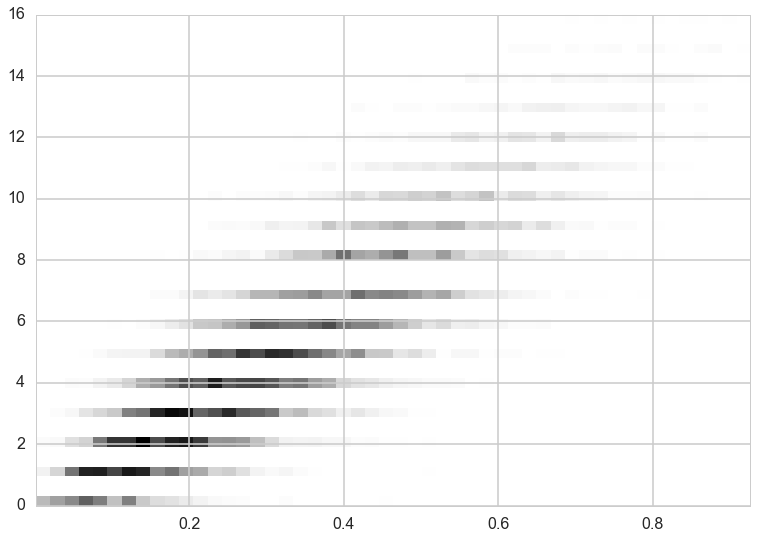Keywords: conjugate prior | gibbs sampler | mcmc | binomial | beta | beta-binomial | Download Notebook
Summary
Gibbs sampler for a model in which one of the conditionals look like a distribution which is part of a conjugate pair. In this case we can use Bayes theorem to get the other conditional by multiplying the known conditional by a marginal which is the other part of the conjugate pair. Our example involves a $Binom$ conditional. Multiplying by a $Beta$ marginal leaves us with the other conditional as another $Beta$.
%matplotlib inline
import numpy as np
from scipy import stats
from scipy.stats import norm, gamma
from scipy.stats import distributions
import matplotlib.pyplot as plt
import seaborn as sns
import time
sns.set_style('whitegrid')
sns.set_context('poster')
Contents
We now going to take a look at a slightly more complicated case that was originally outlined in full generality by Casella and George (1992). Suppose we have a nasty looking joint distribution given as:
Looks like a binomial
For such a situation the two conditional distributions are not exactly obvious. Clearly we have a binomial term staring at us, so we should be looking to try and express part of the function as a binomial of the form,
It follows directly that for our example we have a binomial with $n=16$ and $\theta =y$,
The $ x\vert y$ conditional
| So, now we need the conditional for x | y, and we know from Bayes’ theorem that : |
so what we should be looking for is a conjugate prior to a Binomial distribution, which is of course a Beta distibution:
With this intuition in mind, the math is now trivial:
which for our example question is simply:
with $\alpha=2$ and $\beta=4$.
The sampler
With our conditionals formulated, we can move directly to our Gibbs sampler.
from scipy.stats import binom, beta
n=16
alph=2.
bet=4.
def gibbs(N=10000,thin=50):
x=1
y=1
samples=np.zeros((N,2))
for i in range(N):
for j in range(thin):
y=binom.rvs(n,x)
newalph=y+alph
newbet=n-y+bet
x=beta.rvs(newalph, newbet)
samples[i,0]=x
samples[i,1]=y
return samples
out=gibbs()
plt.hist2d(out[:,0],out[:,1], normed=True, bins=50)
plt.show()
